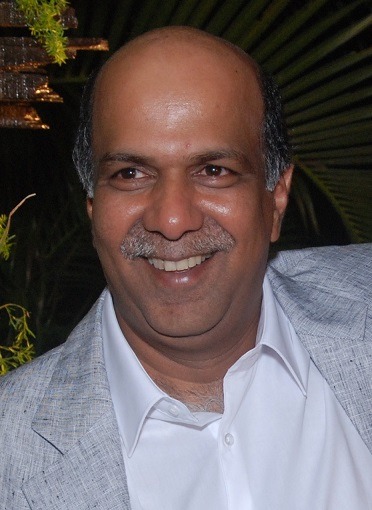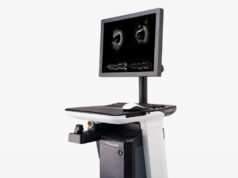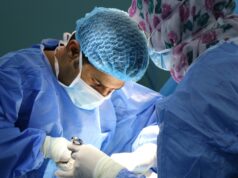 “Interventional radiology has always been characterised by its innovative spirit. We are now seeing progress with new procedures being developed to create percutaneous arteriovenous fistulae. I am impatiently awaiting the results of the NEAT (Novel endovascular access trial) study,” Gireesh Mukund Warawdekar, consultant interventional radiologist at several leading hospitals in Mumbai, India, and 2014–16 president of the Indian Society of Vascular and Interventional Radiology (ISVIR), tells Interventional News.
“Interventional radiology has always been characterised by its innovative spirit. We are now seeing progress with new procedures being developed to create percutaneous arteriovenous fistulae. I am impatiently awaiting the results of the NEAT (Novel endovascular access trial) study,” Gireesh Mukund Warawdekar, consultant interventional radiologist at several leading hospitals in Mumbai, India, and 2014–16 president of the Indian Society of Vascular and Interventional Radiology (ISVIR), tells Interventional News.
When did you first decide on a career in medicine and why did you choose interventional radiology?
I grew up with a father who, in addition to being a practising radiologist, was also extremely keen on teaching and exploring radiophysics at the Atomic Energy Institute, Mumbai, India. He would spend many happy hours focused on the theoretical and experimental study of radiation; its emission, propagation, and interaction with matter.
His interest in radiology and radiation probably led to my decision to study medicine. During my residency I had the privilege of working in interventional radiology and I realised, quite clearly, that this was the field I wanted to pursue.
Who were your mentors and what wisdom did they impart to you?
I was taught the basics and finer nuances of interventional radiology by Dr Vimal Someshwar, my guide. He always emphasised that the patient should be a physician’s primary focus, and said that the best treatment for him/her with the least likelihood of complications, is the way one should practice medicine. It was never a teacher-student relationship; rather, he was like a friend who showed me the way ahead.

Which innovations in interventional radiology have most influenced your career?
During my training period, when interventional radiology was at a nascent stage in India, we had absolutely no access to medical devices—we used to make coils out of guidewires and catheters out of Kifa tubing. Unsurprisingly, our crossing rate of stenoses and occlusions used to be 20–30%.
Similarly, we did not have access to vascular sheaths either. Until we started acquiring sheaths and most importantly the Glidewire (Terumo), our practice in India was quite limited. However, what we lacked in terms of devices, I think we made up for in ingenuity. The Glidewire revolutionised our interventional radiology practice and our crossing rate of occlusions/stenoses went up to nearly 95–98%.
Could you please briefly describe interventional radiology’s place in Indian healthcare? What procedures are widely performed and what are some of the challenges that it faces?
India is a vast nation made up of some 30-odd states. We always say of India, that diversity and change are the only constants. The practice of interventional radiology is similarly very variable depending on the state in question. I believe that the practitioner who begins practicing first, tends to dominate the market. In Mumbai (in the state of Maharashtra), where I practice, interventional radiologists were the first to carry out both vascular and non-vascular interventions, so we dominate the practice.
However, the situation is different in the other regions where it is dominated by the other medical specialties such as cardiologists, or vascular surgeons, depending on the specialty that began performing these procedures first. When interventional radiologists are in charge, the entire gamut of interventional radiology procedures is usually performed. On the other hand, in situations where other specialties dominate, interventional radiologists predominantly perform embolization and other non-vascular procedures including image-guided biopsies, ablations and management of venous insufficiencies.
As president of the ISVIR 2014–16, what are your goals for the organisation in your term?
Until now, we have had no formal training programme for interventional radiology as a subspecialty in India. We have just got approval to start two superspecialty programmes, ie. the post-doctoral certificate course (DM) and Fellowship of the National Board (FNB) in interventional radiology which we will start in early 2017. The only way forward for interventional radiology is to train more young and enthusiastic radiologists to take it up as a full-time profession. This can only be achieved if we have a well-structured training programme in place, which I think we have achieved. This credit goes to the entire Executive Committee of ISVIR that has worked so hard to achieve this goal.
Interventional radiology is such a wide-ranging speciality that turf wars seem almost inevitable. How is this challenge tackled in India?
It does seem like turf wars are here to stay. In India, we had the problem that there were not enough interventional radiologists to take up the challenge. The way to overcome this is to have more interventional radiologists available to do the job, fill any current lacunae and deliver results. Finally, if interventional radiologists are better trained and so more competent to perform procedures, the other specialties automatically will become irrelevant. I believe that these new super-specialty programmes will deliver the goods. This model has worked in Mumbai and I see no reason that it will not elsewhere in the country as well.
Which aspects of interventional radiology do you forsee a strong growth for in India?
Interventional oncology is and will always remain our forte. I have seen a quantum leap in the number of procedures being performed. The number of centres carrying out these procedures has grown as well. I anticipate that vascular interventions too will follow suit.
Which early technologies are you keeping an eye on?
Interventional radiology has always been characterised by its innovative spirit. We are now seeing progress with new procedures being developed to create percutaneous arteriovenous fistulae. The NEAT data are certainly to look out for. I am impatiently awaiting these results, which are expected to come out by the end of this year, or early next year. If the results are favourable, then this will add a new dimension to the venous access field.
What research from India are you are most proud of?
So far, research opportunities in India whose results will alter the course of practice in interventional radiology have been few and far between. The good news is that we are about to embark on a trial that may result in a paradigm shift in the treatment of superficial femoral artery and tibial lesions.
What are the biggest challenges for interventional radiology in 2016?
We need to increase awareness about interventional radiology and the safety and efficacy of our treatments. We need to educate not only the medical fraternity but also our potential patients. I think this can be achieved by starting our own outpatient departments so that the patients can walk in directly to the interventional radiology department rather than being referred to us by other specialists.
Could you please describe a memorable case?
A case that was referred to me after being refused by three cardiovascular and thoracic surgery units for an iatrogenic post-aortic valve replacement pseudoaneurysm of the ascending aorta is one that stays with me. Re-exploration was refused by all the three surgeons at these units and we finally treated this female patient with a patent ductus arteriosus closure device, percutaneously for this infrequent but well-recognised and potentially fatal complication after cardiac surgery.
What is your key message to young interventional radiologists?
Interventional radiology is a very demanding, but rewarding specialty. The young interventional radiologist must be clinically trained, focused and utterly competent in order to comprehensively treat patients. There might be a latent period before you get busy in your practice, but during that time you should use your time to pursue research and publish your work in order to be relevant in the field.
What are your interests outside of medicine?
I love spending time with my family and our pets (we have rescued a dog and a cat). I also love my Sunday morning round of golf which I call my weekly fix. Besides that, I enjoy sports such as cricket and soccer. I thoroughly enjoy travelling and exploring new places and local cuisines. I confess to listening to “retro” music quite a lot!
Fact file
Current role
Consultant interventional radiologist at Lilavati Hospital and Research Centre, Holy Family Hospital, Cumballa Hill Hospital and Heart Institute, Breach Candy Hospital, Fortis Hospitals, Asian Heart Institute, Jupiter Hospital, Dr Namjoshi’s Criticare Hospital, Hinduja Hospital, Dr LH Hiranandani Hospital and others.
Residency and fellowships
1992–1994 Senior resident, Departments of Ultrasound, General Uroradiology, and Vascular and Interventional Radiology, Bombay Hospital Institute of Medical Sciences, Mumbai, India
1994–1995 Senior resident, Department of CT Scanning, Bombay Hospital Institute
of Medical Sciences
August–October 1998 Fellowship in endoscopic ultrasound and interventional radiology, Georgetown University Medical Centre, Washington, USA
1998 Fellowship in Endoscopic ultrasound and interventional radiology, Universität Krankenhaus Eppendorf, Hamburg, Germany Achievements (selected)
1992 First to perform fallopian tube recanalisation in Mumbai, India
1996 First to perform carotid stenting in Mumbai
1998 First to perform transjugular liver biopsies in Mumbai
1998 First to perform endovascular repair of abdominaland thoracic aortic aneurysms in Mumbai
1998 First to start using endoscopic ultrasound at Bhatia Hospital in Mumbai
2002 First to perform intracranial stenting in India
2000 Approved panel physician by Boston Scientific for “Carotid Angioplasty Center of Expertise” programme
Society memberships
2002–04 Joint secretary, Indian Society of Vascular and Interventional Radiology (ISVIR)
2014–present Executive member of ISVIR, president, ISVIR










